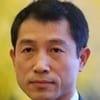Explore all the information on
Poultry gut health
The efficient conversion of feed into its basic components for optimal nutrient absorption is vital for both broiler and broiler breeder production and welfare. Gut health, an intricate and complex area combining nutrition, microbiology, immunology and physiology, has a key role to play. When gut health is compromised, digestion and nutrient absorption are affected which, in turn, can have a detrimental effect on feed conversion leading to economic loss and a greater susceptibility to disease. In addition, recent changes in legislation on the use of antimicrobials, differing feed requirements and more efficient birds highlight the need for a better understanding of gut function and gut health.
INTRODUCTION The intestinal epithelium constitutes the largest and most important barrier against external environmental agents and has two critical functions: to prevent the entry of harmful intraluminal microorganisms, antigens, and toxins, and to enable the selective translocation of dietary nutrients and electrolytes into circulation (Salminen and Isolauri, 2006; Salzman, 2011; Elson and Cong, 2012). One of the basic...
Comments : 0
Recommendations: 2
Alain Riggi, Global Poultry Manager at Phileo LeSaffre, explains how YCW Safmanman® positively influenced gut health of some birds in a tested necrotic enteritis model, during the 5th IHSIG Symposium on Poultry Intestinal Health in Bangkok, Thailand....
Comments : 2
Recommendations: 3
.jpg&w=3840&q=75)

Analyze over 40 different feed raw materials with AMINONIR® Portable | Evonik
Suggested link
Large amount of undigested Maize seen during the daily clean-out process from manure from the belt. Water is used during this process for diluting the manure for application with a vacuum tanker and spread as a slurry. Birds are perfectly health and the condition is seen from week one onwards. Geoff Williams, South Africa. ...
Comments : 0
Recommendations: 0
Background The avian ceca generally have a more important role in digestion than the cecum in most mammals. Avian ceca are usually finger-shaped blind pouches, presenting as lateral extensions at the junction of the small and large intestine and are commonly present in pairs. In birds the ceca vary considerably in size and morphology; ranging from very long, such as in most domestic poultry, to completely absent, such as in pigeons and parrots [1]. In the chicken, they reach...
Comments : 0
Recommendations: 4
Enteric disorders are one of the most important groups of diseases which affect poultry production world-wide and they are continuing to cause high economic losses due to increased mortality rates, decreased weight gain, increased medication costs, and increased feed conversion rates (HAFEZ, 2011). Estimates of the annual costs of poultry-associated cases of salmonellosis and campylobacteriosis, two major causes of foodborne diseases in humans, in the United...
Comments : 1
Recommendations: 5
Dr. Maarten De Gussem (Vetworks) tells us what were the most interesting topics discussed in Bangkok, Thailand and what to expect for the next edition of this Symposium on Poultry Intestinal Health, which will be held in Rome, April 3-5, 2019....
Comments : 0
Recommendations: 4


Bacillus licheniformis-Fermented Products Improve Growth Performance and Intestinal Gut Morphology in Broilers under Clostridium perfringens Challenges (Extract)
Suggested link
Dr. Filip Van Immerseel (IHSIG) analyzes the positive response and great content presented in this Symposium on Poultry Intestinal Health, that was held in Bangkok, Thailand, and also explains the plans for the next edition and the possible venue....
Comments : 0
Recommendations: 3
INTRODUCTION In the winter of 1959, the British cargo ship Rosetti, unloaded a shipment of peanut meal from Brazil to England, which was utilized as a protein supplement in the diets of poultry and other domestic animals. By summer of 1960, an outbreak of an unknown disease killed several species of poultry including turkeys, ducklings, and pheasants. In all, 500 cases were reported involving the deaths of more than...
Comments : 1
Recommendations: 5
Dr. Manoosak Wongphatcharachai (CP Group) talks about changes made in research approach and application of biotechnology to improve animal performance, feed efficiency and animal health, during the 5th IHSIG Symposium on Poultry Intestinal Health in Bangkok, Thailand....
Comments : 0
Recommendations: 6
Dr. Damer Blake (Royal Veterinary College) speaks on drugs resistance and the relevance of the microbiome, during the 5th IHSIG Symposium on Poultry Intestinal Health in Bangkok, Thailand....
Comments : 0
Recommendations: 4
.jpg&w=3840&q=75)

All-in-one mycotoxin extraction method for faster time-to-results - Myco 5-in-1 PLUS
Suggested link
Dr. Guo Yuming (China Agricultural University) talks about the development of the epithelial barrier, as well as ways to improve its function, during the 5th IHSIG Symposium on Poultry Intestinal Health in Bangkok, Thailand....
Comments : 0
Recommendations: 6
Dr. Rommel Sulabo (University of the Philippines Los Baños) speaks on the benefits of different feed ingredients, such as cereal grains, co-products, and proteins of plant or animal origin, during the 5th IHSIG Symposium on Poultry Intestinal Health in Bangkok, Thailand....
Comments : 0
Recommendations: 5
.jpg&w=3840&q=75)

Trends and challenges in Poultry Production: Jonathan Cade, President of Hy-Line International
Suggested link
Dr. M. Gopi (Central Avian Research Institute) explains the effects of these additives on body weight in broilers, and other benefits, during the 5th IHSIG Symposium on Poultry Intestinal Health in Bangkok, Thailand....
Comments : 0
Recommendations: 1
Dr. Christian Lückstädt, Technical Director for "Feed" business unit at Addcon, summarize his conference about the impact of diformate on intestinal health in poultry nutrition, during the 25th Latin American Poultry Congress, in Guadalajara, Mexico...
Comments : 3
Recommendations: 7
Dr. Tim Goosens, Business Development Manager Digestive Performance for Nutriad, presents some solutions to improve intestinal health of production animals, such as ADIMIX®, among others topics, during VIV Asia 2017, In Bangkok, Thailand....
Comments : 1
Recommendations: 2
Engormix will be present next week at the 5th Symposium on Poultry Intestinal Health that will be held at the Royal Bangkok Sports Club, in Thailand (October 11-12).
It will be another opportunity for all those involved in the poultry industry...
Comments : 1
Recommendations: 1
Introduction A range of studies have investigated the structure of the microbiome in the gut of broiler chickens. Comparison across studies has proven difficult because of the variety of different methods used; e.g. culture based studies [1], G+C profiling analysis [2], quantitative PCR [3], and 16S rRNA based studies. The 16S-based methods have used a number of different approaches including terminal restriction fragment length polymorphism analysis [4], temporal temperature...
Comments : 8
Recommendations: 11
INTRODUCTION
The gut microbiota is made up of complex interacting populations of microbes, usually dominated not only by bacteria but also archea, eukaryotes and viruses. There is a rapidly growing body of evidence that demonstrates that the microbiota has diverse and wide-ranging roles in many biological functions of the host. The integration of host and microbiota is so important and fundamental that it has led to the concept of the metaorganism. 1 ...
Comments : 0
Recommendations: 0
.jpg&w=3840&q=75)

Analyze over 40 different feed raw materials with AMINONIR® Portable | Evonik
Suggested link
The Intestinal Health Scientific Interest Group (IHSIG) group organizes its 5th Symposium on Poultry Intestinal Health that will be held at the Royal Bangkok Sports Club – Polo Club from October 11-12, 2017. IHSIG aims to promote health and welfare in poultry production by provoking debate between the scientific community, poultry producers, regulatory authorities, nutritionists and...
Comments : 2
Recommendations: 0
Introduction
Poultry production has undergone a substantial increase compared to other animal food-producing industries since 1970 (Yegani and Korver, 2008). Improvements in housing, genetic selection for growth rate, and advances in feed formulation achieved by matching nutrient requirements of the birds and nutrient contents of the feedstuffs, have resulted in higher meat yield, improved feed conversion and lower mortality rates (Choct et al., 1999;...
Comments : 1
Recommendations: 3











.jpg&w=3840&q=75)

















